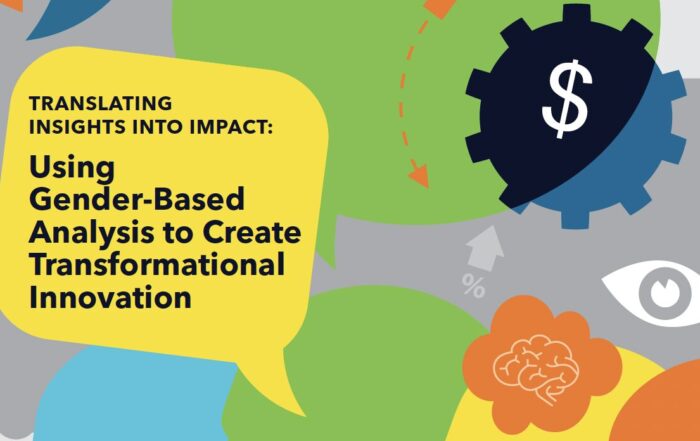Introduction
Due to the advancement of technology, we are rapidly transforming how we communicate, interact, and shape society. This transformation is particularly critical for vulnerable groups, such as women of colour and members of the LGBTQ2+ community. It is these groups who have historically suffered the most from stigma and violence in the context of structural inequality and discrimination, and technology has amplified this suffering.
To coincide with the 16 Days of Activism Against Gender-based Violence in 2018, GATE brought together five panelists to discuss online violence, technically known as “technology-facilitated violence, abuse and harassment.” These panelists included: Nasma Ahmed, Director of the Digital Justice Lab; Irene Poetranto, Senior Researcher at The Citizen Lab; Kate Robertson, Associate at Markson Law; Takara Small, Host and Producer of The Globe and Mail podcast, “I’ll Go First” and Founder of VentureKids Canada; and Molly Thomas, a reporter for CTV News, YesTV and CPAC.
This panel not only explored the impact of technology-facilitated violence, abuse and harassment, but also why our legal and political structures are failing to effectively address it–and what we, as individuals and as a society, can do about it. Some key insights and terminology from this panel, are summarized below.
Key terms to know:
- ICT–Information and Communication Technology
- Sextortion–private images or video that are used to blackmail a victim
- Doxing–making private information public (like home addresses, email addresses, phone numbers, etc.)
- Trolling–targeting a victim with a barrage of messages to enact violence against them
- Revenge porn–the non-consensual release of private video or images
- IoT–the Internet of Things (this includes anything that can be connected to the Internet, such as smart refrigerators, home-security systems, wearable devices, etc.)
Because technology is so ubiquitous, and thanks to the borderless nature of the Internet, abusers are using digital tools and platforms to harass, intimidate, and surveil.
Due to the fact that technology is so ubiquitous, and thanks to the borderless nature of the Internet, abusers are increasingly using digital tools and platforms to harass, intimidate, and surveil their victims. It is also common for abusers to use multiple technologies in combination with non-technological tactics to harass or perpetrate violence against their victims. In domestic abuse cases for example, abusers often exert “coercive control,” meaning they demand access to the emails, texts, messages, etc. of their victims. In some cases, they use IoT devices like smart home-security systems to physically control their victims’ movements. Unfortunately, it has become more difficult for vulnerable groups to find safety both online and offline.
How to protect yourself online
Given that Internet trolls continue to target women with violent and threatening content and many social platforms have done little to protect the targets from this abuse, women and other vulnerable populations are forced to act to protect themselves.
- Limit the information you make public, and do not expose detailed information about your personal life (like your home address).
- Do not post your location.
- Do not post photos of others without their consent.
- Carve out a safe space on social media (e.g., a private Instagram account).
- Trust your instincts–if someone’s comment makes you feel unsafe; report it and get support.
- Express to the perpetrator that you do not want to be communicated with, and state that you feel harassed by their comments or actions. This will make it easier to take legal action.
- Document incidents, either by email, taking screenshots, or writing notes. Be sure to ask a friend to support you as you go through the process of documenting.
- Do not share your passwords.
- If you suspect that one of your IoT devices, such as your home-security system, has been hacked or is being controlled by someone other than yourself, report it immediately and change any passwords or login information.
If you receive a comment that you feel is threatening, report it.
It is important to note that just because a platform’s policy may allow a user to post harmful content, does not mean that it is a law-free zone. In other words, if you receive a comment that you feel is harassment and/or is threatening, you should report it to the authorities even if the platform itself does not take any action. It is important to always be proactive and diligent in order to protect yourself.
The role of companies and governments
In response to the increased use of their platforms or tools for abuse, many companies like Facebook and Twitter are looking at their practices and procedures in order to prevent this type of harassment. National governments and international governmental bodies, such as the European Union (EU), are also moving forward with legislation that will require these companies to act. For example in France, Germany, and the United Kingdom, there are proposed requirements for “social networks to take measures to remove or block online hate speech, harassment, and so-called ‘fake news.’”
It is a delicate balance between protecting free speech online and preventing harassment.
However, it is a delicate balance between protecting free speech online and preventing harassment. In particular, there are concerns regarding the amount of responsibility and control given to platforms to police themselves when they have failed to do so in the past. Therefore, digital rights advocates and researchers argue that these companies should be required to be more transparent about their policies, practices, and procedures for taking down content, and also create an appeal process for users.
Conclusions
Ultimately, in order to stop technology-facilitated violence, abuse, and harassment, a myriad of policies and legislation by governments and companies need to be implemented. It is also important for users, and society-at-large, to advocate for these policies and contribute to the larger conversation regarding acceptable norms and activities online.
For more information on how to keep yourself safe online, we also encourage you to check out the Security Planner created by the Citizen Lab at the University of Toronto, which includes a series of recommendations on online safety and security, as well as an anonymous chat system to receive advice from an expert.







